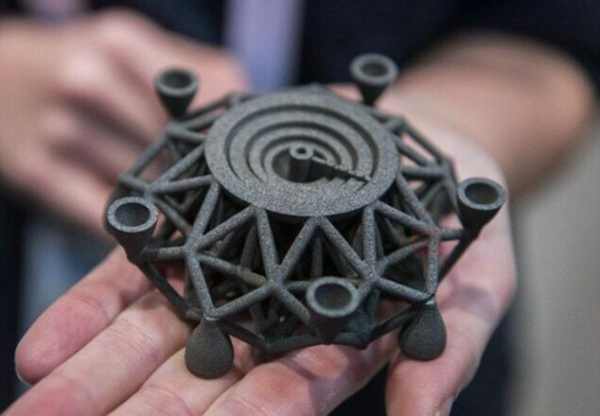3D PRINTING
We are pleased to offer customer the 3D printing service, which generally include two types: metal printing and plastic printing. Which is mainly used for customer to obtain prototype parts for assembly and function testing. Some are used in mold construction area, such as mold cooling component.


What Is 3D Printing?
3D printing is a process that creates physical objects from digital designs by adding material layer by layer. There are different methods of 3D printing, such as Fused Deposition Modeling (FDM), which uses plastic filaments, Stereolithography (SLA), which uses liquid resin, and Selective Laser Sintering (SLS), which fuses powdered materials like metal or plastic. 3D printing is used in many industries, including manufacturing, healthcare, automotive, and aerospace, for making prototypes, custom parts, tools, and even end-use products. It’s a versatile and cost-effective way to quickly bring ideas to life.
1. 3D Printing Methods We Offered
FDM (Fused Deposition Modeling) is a 3D printing technique that uses thermoplastic materials like ABS, PLA, PETG, and nylon, which are melted and extruded layer by layer. It is known for its affordability, durability, and ease of use, making it ideal for prototyping, functional parts, and low-volume production. FDM’s wide material range allows for flexibility in applications, including automotive, aerospace, consumer products, and education, where durable, precise prototypes and functional parts are required.
SLA (Stereolithography) is renowned for its exceptional precision and detail, making it a preferred choice for intricate designs. This 3D printing method utilizes a UV laser to cure liquid resin layer by layer, resulting in smooth surfaces and fine features that traditional manufacturing methods struggle to achieve. SLA is ideal for applications requiring high accuracy, such as dental models, jewelry, and prototypes with complex geometries. Its ability to produce intricate details and tight tolerances allows designers to realize their visions with unmatched clarity and fidelity.
SLS (Selective Laser Sintering) is ideal for creating strong, durable parts by fusing powdered materials with a laser. It’s highly versatile, allowing the use of various materials like nylon, glass-filled nylon, and metals, making it perfect for functional prototypes and end-use parts. SLS excels in producing complex shapes and multi-material applications, ensuring durability and strength
3D metal printing is mainly used to address heat accumulation issues in molds.
This additive manufacturing process uses lasers to fuse layers of metal powder, creating molds with complex structures. In traditional mold-making, limited space often prevents the proper design of water channels, leading to overheating. This heat buildup can result in poor product quality, longer molding cycles, and reduced production capacity.
By using 3D printing to create molds and inserts, custom water channels can be designed to efficiently cool all areas. This reduces heat, ensures better product appearance, minimizes warping, and shortens the injection cycle by 20-40%, boosting production efficiency
2. The Advantages of 3D Printing
Speed and Efficiency: 3D printing accelerates production by creating parts directly from digital designs, reducing time compared to traditional methods.
Cost-Effective Prototyping: No need for expensive molds or tools, making it easier to test and modify designs, lowering development costs.
Customization: Easily produce custom parts without retooling, offering flexibility for tailored solutions.
Versatile Applications: Used across industries like automotive, aerospace, and healthcare to produce a wide range of parts with precision.
3. How It Works (Step-by-Step Process)
Outline the process of working with you, from design submission to final production:
- Upload Your Design
- Select Material & Technology
- Receive a Free Quote
- Printing & Post-Processing
- Quality Inspection & Delivery
- Provide transparent information on how pricing is calculated (e.g., based on material, technology, quantity).
- Consider offering a pricing estimator or direct link to get a quote.
4. Why Choose Hoshi Tool For 3D Printing?
- Expertise: Showcase your experience and industry knowledge.
- Quality Assurance: Mention your commitment to high-quality prints with accurate dimensional tolerances and surface finishes.
- Material Options: List the materials you offer, such as PLA, ABS, resin, nylon, and metal.
- Customer Testimonials/Case Studies: Add social proof by featuring positive feedback or examples of successful projects.
5. FAQs On 3D Printing Service In Hoshi?
3D PRINTING FOR METALS
In the cases of 3D metal printing we have done so far, it is mainly used to help customers solve the heat accumulation problem of molds.
This type of 3D printing, or additive manufacturing, involves using special lasers to stack layers of metal powder into molds. Applied in the molding industry for complex products, small mold space leads to the inability to design water mold and insert. Heat accumulation will result in poor product appearance, long molding cycle and low production capacity.
If the mold and insert use 3D-printed metal powder accumulation, the waterway design can be designed according to the structure of the parts to reach the mold and insert each position, so that the mold and insert rapid temperature. Fast and effective guarantee product appearance, reduce product warping deformation, shorten injection cycle 20-40% to improve production capacity.


